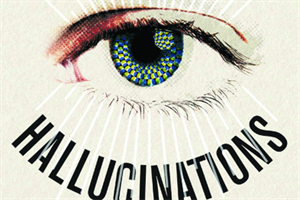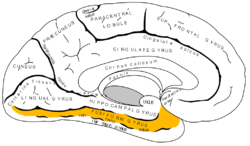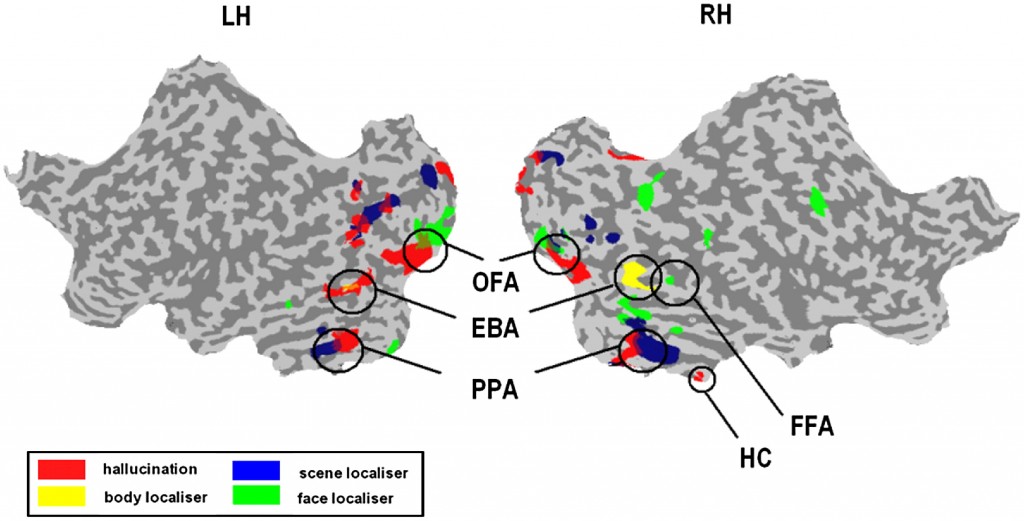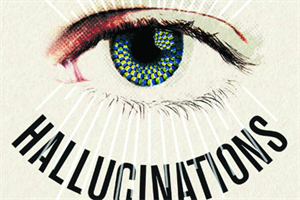Ever wondered if people who lose their vision or at least part of their vision have visual hallucinations? According to Charles Bonnet, of course they do! In fact, this phenomenon is known as the Charles Bonnet Syndrome (CBS), named after the Swiss naturalist and philosopher (1720 –1793). He started noticing that his own 89-year-old grandfather, who was losing nearly all of his vision due to cataracts, was suffering from visual hallucinations even though he was still lucid.[1]
What exactly is Charles Bonnet Syndrome (CBS)?
Charles Bonnet’s grandfather began to see men, women, birds, carriages, different colors and buildings differently. He would often see these fig ures moving, either approaching, retreating, becoming smaller or larger, and even disappearing or then reappearing[2]. Ernest Naville is credited with describing what are understood to be the major symptoms of CBS (deMorsier 1967). He describes it as visual experiences that occur when an individual is in a ‘state of clear consciousness and does not deceive the subject, the figures in the vision coexist with normal perception, the visions are exclusively visual (the hallucinations do not make any noise), are not accompanied by any bizarre sensations, come and go without the person knowing why, are not distressing but rather are interesting, and finally disappear when the eyes are closed.’ The most important feature is that the visual hallucination is accompanied with some sort of visual reduction or impairment.[3] CBS happens mostly in elderly people but it can also occur in people of any age who suffer from vision impairment.
ures moving, either approaching, retreating, becoming smaller or larger, and even disappearing or then reappearing[2]. Ernest Naville is credited with describing what are understood to be the major symptoms of CBS (deMorsier 1967). He describes it as visual experiences that occur when an individual is in a ‘state of clear consciousness and does not deceive the subject, the figures in the vision coexist with normal perception, the visions are exclusively visual (the hallucinations do not make any noise), are not accompanied by any bizarre sensations, come and go without the person knowing why, are not distressing but rather are interesting, and finally disappear when the eyes are closed.’ The most important feature is that the visual hallucination is accompanied with some sort of visual reduction or impairment.[3] CBS happens mostly in elderly people but it can also occur in people of any age who suffer from vision impairment.
Not much is known about the causes of CBS. There are, however, two theories as to why it does occur. The first is the release theory which says that if there is any form of lesion in the visual system, it would cause errors in communications within the visual system of the brain which in turn causes these hallucinations (it seems as if the brain turns the faulty message into something understandable). The second theory is the deprivation theory which implies that the decline in sensory stimulation causes the production of ‘out-of-nowhere’ images from the brain which then results in hallucinations (since the brain relies on sensory input to interact with the outside world; in other words a brain that is left by itself may produce hallucinations).[4] In Oliver Sacks’ TEDtalk, shown above, he discusses how CBS hallucinations occur. With the help of fMRI we have been able to see which parts of the brain light up when one with CBS hallucinates. He suggests that the hallucination of figures, faces, cartoons and colour occurs at different parts of the visual system. So for example, hallucination of geometrical figures is associated with the primary visual cortex, formed images is associated with damage to part of the fusiform gyrus (when there is damage there, you lose ability to recognize faces  but when there is abnormal activity then you begin to hallucinate faces), hallucinating cartoons, recognizes cartoons and sees cartoons is all associated to the same part of the visual system. He also notes that CBS hallucinations include only the visual system or ‘visual brain’ and no other cognitive factor. When one is visually impaired the process that occurs in the visual cells (that are associated with perception and imagination) is interrupted which result in abnormal perceptions. He describes the result to be an ‘anarchic’ stimulation or release of these visual cells and thus in turn one hallucinates.[5]
but when there is abnormal activity then you begin to hallucinate faces), hallucinating cartoons, recognizes cartoons and sees cartoons is all associated to the same part of the visual system. He also notes that CBS hallucinations include only the visual system or ‘visual brain’ and no other cognitive factor. When one is visually impaired the process that occurs in the visual cells (that are associated with perception and imagination) is interrupted which result in abnormal perceptions. He describes the result to be an ‘anarchic’ stimulation or release of these visual cells and thus in turn one hallucinates.[5]

Because of the negative connotations associated with hallucinations, those who do experience them often decide not to tell anybody. However, patients who experience sort of hallucinations associated with CBS need to report them because they may suffer from some kind of mental disability. Even though this phenomenon does occur, CBS is not included in clinical practice, meaning it is not recognized and people who experience these hallucinations more often than not are diagnosed as patients who suffer from mental disabilities. In a study done by R.J. Teunisse, J.R. Cruysberg, W.H. Hoefnagels, et al. out of 60 patients who had CBS, only 16 of them told their doctors about their hallucinations and of those 16 patients only one of them was diagnosed correctly. There is also another case of a woman who was sent to a mental institution and if her social worker did not intervene, she would have been kept there and been treated for the wrong diagnoses.[6]
There is still a lot that needs to be studied about CBS (people have not decided on a proper definition for it) but the important thing to note is that visual hallucination does not necessarily equal to either drugs or mental disabilities.
Watch the following TED talk by Oliver Sacks who explains CBS by examining experiences with his patients – Oliver Sacks, neurologist explains CBS
[1] Menon, G. J., Rahman, I., Menon, S. J., & Dutton, G. N. (2003). Complex visual hallucinations in the visually impaired: the Charles Bonnet Syndrome.Survey of ophthalmology, 48(1), 58-72.
[2]Morrison, A. P., Turkington, D., Pyle, M., Spencer, H., Brabban, A., Dunn, G., … & Hutton, P. (2014). Cognitive therapy for people with schizophrenia spectrum disorders not taking antipsychotic drugs: a single-blind randomised controlled trial. The Lancet, 383(9926), 1395-1403.
[3] Morrison, A. P., Turkington, D., Pyle, M., Spencer, H., Brabban, A., Dunn, G., … & Hutton, P. (2014). Cognitive therapy for people with schizophrenia spectrum disorders not taking antipsychotic drugs: a single-blind randomised controlled trial. The Lancet, 383(9926), 1395-1403.
[4] The curious neuron: Visual Hallucinationsof the Blind. (2012, September 26). Retrieved from http://www.thecuriousneuron.com/2012/09/visual-hallucinationsof-blind.html
[5] Sacks, O. (2009, February). What hallucination reveals about our minds. Retrieved from http://www.ted.com/talks/oliver_sacks_what_hallucination_reveals_about_our_minds#t-984539
[6] Menon, G. J., Rahman, I., Menon, S. J., & Dutton, G. N. (2003). Complex visual hallucinations in the visually impaired: the Charles Bonnet Syndrome.Survey of ophthalmology, 48(1), 58-72.
